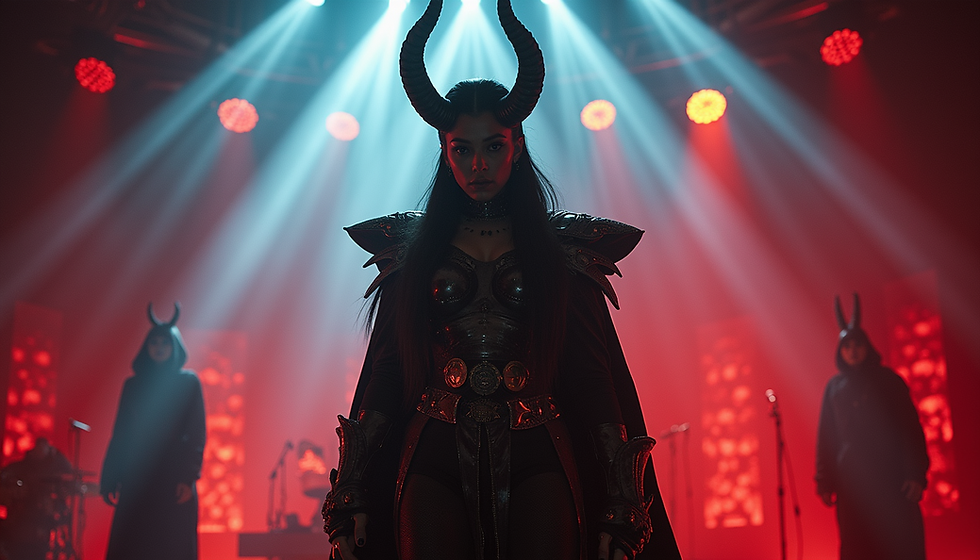The Evolution of Superman: From Comics to Cultural Icon
- Joseph Fanning
- Oct 4
- 4 min read
Superman, the quintessential superhero, has captivated audiences since his debut in 1938. Created by Jerry Siegel and Joe Shuster, he emerged as a symbol of hope during a challenging time in history. Over the decades, Superman has transformed from a comic book character into a cultural icon, influencing the comic book industry, film, television, and popular culture at large. This blog post explores the journey of Superman, examining his origins, transformations, and timeless legacy.
The Birth of Superman
Superman's story began in the pages of Action Comics #1, where he was introduced as a champion of the oppressed. With superhuman abilities like flight and super strength, he quickly became a symbol of justice. The character was born from a desire to create a hero who could stand against the injustices of the world, reflecting the dreams of a generation.
In the early stories, Superman fought corrupt politicians, gangsters, and other societal evils, embodying the ideals of truth and justice. For many readers during the Great Depression and World War II, he served as a beacon of inspiration, offering hope amidst their struggles. Notably, during the late 1930s, Superman helped sell over 70 million comic books, showcasing his significant impact from the onset.
The Golden Age of Comics
The 1940s marked the Golden Age of Comics, with Superman leading the charge. His popularity soared, leading to the creation of a radio show, animated shorts, and eventually, a live-action film. The character's adventures expanded, introducing iconic villains like Lex Luthor and memorable allies such as Lois Lane.
In this era, Superman's image solidified as the archetypal superhero. He was portrayed as a larger-than-life figure, often saving the day with incredible powers. The stories became increasingly fantastical, reflecting the escapism that readers yearned for during wartime. For instance, in 1940, he was featured in Superman #1, which sold approximately 1 million copies, highlighting his immense popularity.
The Silver Age and Beyond
The Silver Age of Comics, starting in the late 1950s, brought a shift in Superman's character. Writers began exploring his dual identity as Clark Kent, adding more depth to his story. This era also introduced the "Superman Family," including characters like Supergirl and Krypto the Superdog, broadening the universe.
Additionally, the concept of the "multiverse" emerged, allowing for various versions of Superman to coexist. This innovation deepened the character's narrative complexity and introduced science fiction-themed storytelling. One famous storyline from 1961 involved Superman battling his own evil counterpart, Bizarro, showcasing new creative avenues.
The Modern Age of Superman
As the comic book industry evolved, Superman transformed with it. The 1980s and 1990s brought a darker, more nuanced portrayal. The landmark storyline "The Death of Superman" in 1992 shocked fans, as it displayed his vulnerability and showcased the significant impact of his absence on the world.
In the years that followed, writers like Grant Morrison and Mark Waid delved into themes of identity, legacy, and the weight of power. Superman became relatable, grappling with personal challenges and moral dilemmas. A recent storyline in Superman: Rebirth showcases him as a family man, balancing the responsibilities of parenthood with his heroic duties, further endearing him to readers.
Superman in Film and Television
Superman's influence stretches far beyond comic books. Many films and television shows have adapted his story, each adding layers to his legacy. The 1978 film "Superman: The Movie," featuring Christopher Reeve, set the standard for superhero movies. Reeve's portrayal captured Superman's essence, seamlessly blending charm, strength, and vulnerability.
In the 2000s, "Smallville," a television series, reintroduced the character to a new generation by exploring Clark Kent's teenage years. This show emphasized his journey toward becoming Superman while highlighting key relationships that shaped him.
More recently, the DC Extended Universe has reimagined Superman with Henry Cavill in films like "Man of Steel" and "Batman v Superman: Dawn of Justice." These adaptations sparked discussions about his role in today’s society, touching on themes of power, responsibility, and the consequences of heroism. For example, "Man of Steel" grossed over $660 million worldwide, indicating the character's continued commercial success.
Superman as a Cultural Icon
Superman's impact on popular culture is undeniable. He stands as a symbol of hope, resilience, and the fight for justice. His iconic "S" emblem is recognized globally, transcending comics and film. Superman's influence is evident in various forms of media, from merchandise to parodies, continuously inspiring generations of creators and fans.
His enduring popularity stems from relatability. Though superhuman, Superman faces challenges that resonate with people, like juggling personal relationships and moral dilemmas. This mix of complexity and humanity makes him a timeless figure, relevant even in an ever-changing world.
Superman's Journey Continues
The evolution of Superman from a comic book hero to a beloved cultural icon showcases his powerful appeal. Through numerous interpretations and adaptations, Superman persists as a symbol of hope and justice. As we look toward the future, it is clear that Superman will continue to evolve, reflecting modern values and social challenges while remaining a cherished figure for fans around the globe.
Superman's journey is ongoing, and with new stories emerging, his legacy will undoubtedly continue to grow. Whether in comics, films, or television, the Man of Steel will always shine as a symbol of heroism, reminding us of the importance of standing up for what is right.
Joe is a huge fan of superman.










Comments